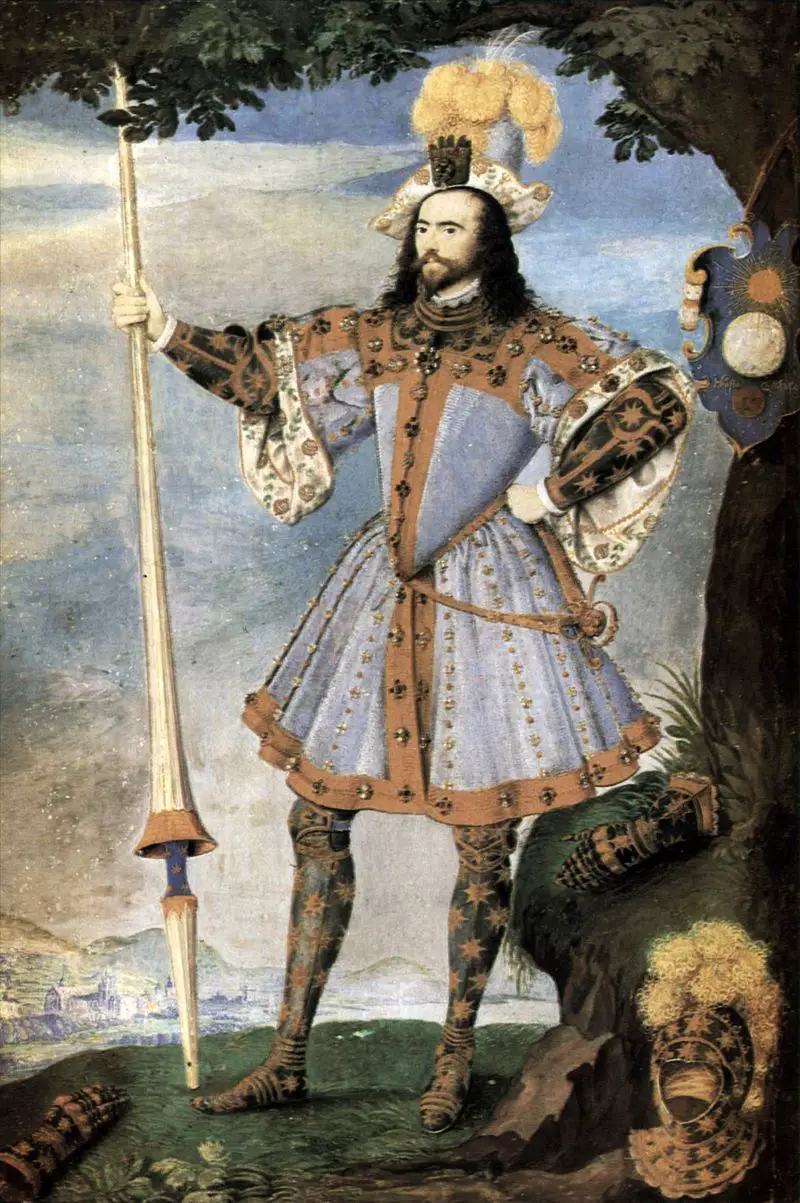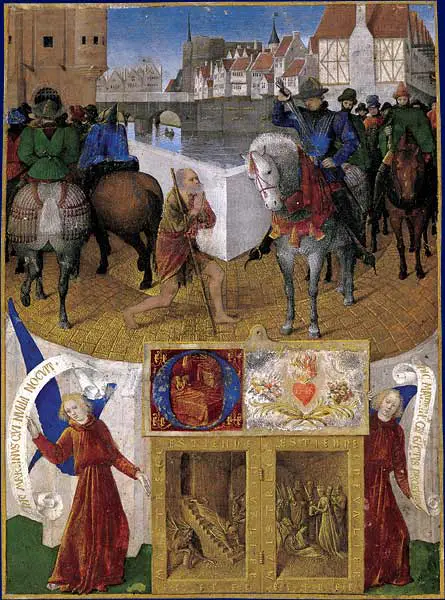 On 12th November 1537,1 Jane Seymour's body was taken by chariot from Hampton Court Palace to Windsor Castle. The chariot was followed by a procession led by the Duke of Suffolk and the Marquis of Dorset. Jane’s stepdaughter, the Lady Mary, acted as chief mourner in the procession and the service, which was held at St George’s Chapel on arrival at Windsor. A solemn watch was kept that night, and then Jane was buried on the morning of the 13th November.2 Queen Jane had died on 24th October, probably from puerperal (childbed) fever, just twelve days after the birth of her son, the future Edward VI.
On 12th November 1537,1 Jane Seymour's body was taken by chariot from Hampton Court Palace to Windsor Castle. The chariot was followed by a procession led by the Duke of Suffolk and the Marquis of Dorset. Jane’s stepdaughter, the Lady Mary, acted as chief mourner in the procession and the service, which was held at St George’s Chapel on arrival at Windsor. A solemn watch was kept that night, and then Jane was buried on the morning of the 13th November.2 Queen Jane had died on 24th October, probably from puerperal (childbed) fever, just twelve days after the birth of her son, the future Edward VI.
Chronicler and Windsor Herald Charles Wriothesley records:
"This yeare, the 12th of November, being Mundaye, the corps of Queene Jane were, with great solemnitie, caried from Hampton Cowrte in a chariott covered with black velvett, with a picture of the sayde Queene richelye apparelled lyke a Queene, with a riche crowne of golde on her head, lyinge above on the coffin of the sayde corps, and so was conveyed to Wyndsore with great lightes of torches, with a great multitude of lordes and gentlemen rydinge all in black gownes and cotes, the Ladye Marie, the Kinges daughter, beinge cheife mourner, with a great companye of ladies and gentleweomen waytinge on her, and ridinge all in blacke allso; and there, with great solemnitie, buried by the Archbishopp of Canterburie, with a great companye of bishopps and abbotts being there present in their mitres, with all the gentlemen and priestes of the Kinges chappell, which rode all the way in their surplesses, singinge the obsequie for the dead; and the morrowe after there was a solemne masse of requiem sunge by the Archbishopp of
Canterburie; and the Bishop of Worcester, called Dr. Latimer, made a notable sermon; and at the offertorie all the estates offered ryche palls of clothe of golde; and after masse there was a great feast made in the Kinges pallace at Windsore for all the estates and other that had bene present at the same buriall."
There was also a commemoration for the late queen in London. Wriothesley also records this in his chronicle:
"Allso, the sayde 12th of Novembre, at afternoone, there was a solemne herse made at Powles [St Paul's] in London, and a solemne dirige done there by Powles queere, the Major of London a beinge there present with the alldermen and sheriffes, and all the majors officers and the sheriffes sergeantes, mourninge all in blacke gownes, and all the craftes of the cittie of London in their lyveries; allso there was a knyll rongen in everie parishe churche in London, from 12 of the clocke at noone tyll six of the clocke at night, with all the bells ringinge in everye parishe churche solemne peales from 3 of the clocke tyll the knylls ceased; and allso a solempne dirige songen in everye parishe churche in London, and in everie churche of freeres, monkes, and chanons, about London; and, the morrowe after, a solemne masse of requiem in all the sayde churches, with all the bells ringinge, from 9 of the clocke in the morninge tyll noone; allso there was a solemne masse of requiem done at Powles, and all Powles queere offeringe at the same masse, the major, aldermen, and sheriffes, and the wardeins of everie crafte of the cittie of
London; and, after the sayde masse, the major and aldermen goeinge aboute the herse sayenge " De profundis," with all the craftes of the cittie followinge, everie one after their degrees, prayinge for the sowle of the sayde Queene."3
Notes and Sources
- Edward Hall, in his chronicle states that Jane's body was carried to Windsor on 8th November. Hall's Chronicle, p. 825, but Letters and Papers (Heralds' College MS. I. 11,f. 37.) concurs with Wriothesley: "Monday, 12 Nov., the corpse was removed to a chair drawn by six chariot horses, and four banners were borne by four barons (not named). Banners (described) were also borne by Chester, Windsor, Richmond, and Lancaster heralds [...] See http://www.british-history.ac.uk/letters-papers-hen8/vol12/no2/pp370-386, 1060, for all the details.
- Norton, Elizabeth (2009) Jane Seymour: Henry VIII's True Love, p. 151.
- Wriothesley, Charles. A chronicle of England during the reigns of the Tudors, from A.D. 1485 to 1559, Volume 1, p. 71-72. http://www.british-history.ac.uk/letters-papers-hen8/vol12/no2/pp370-386, 1060, also gives a detailed account of the procession and burial.



Leave a Reply